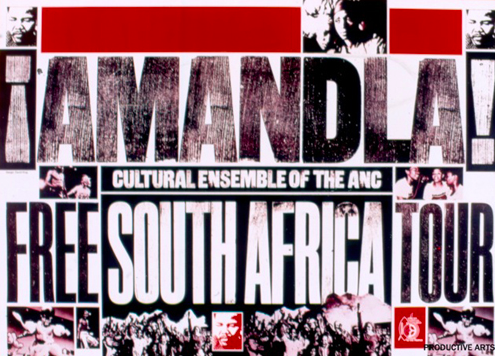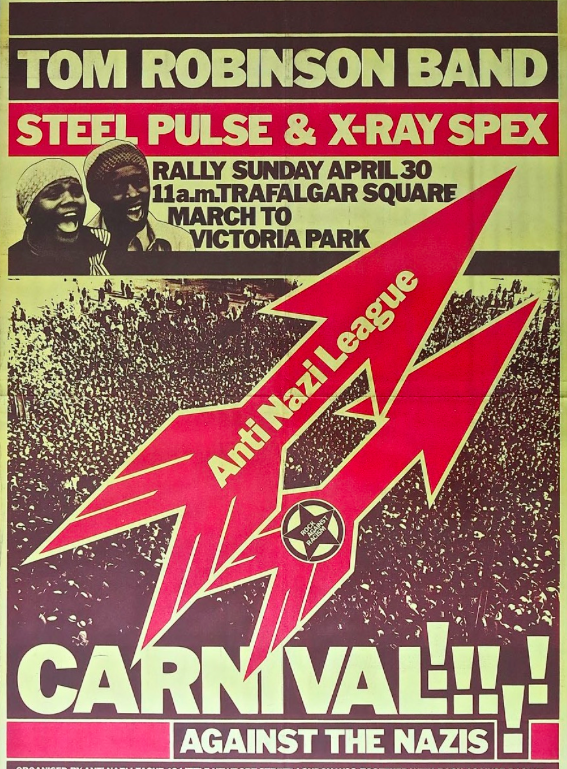Let’s talk about money, honesty and temptation. oh, and also the impossible.
It’s 2012, a hot summers evening. The London Olympics have just begun and I’m taking a bow in front a stadium full of people going nuts, while being watched by a worldwide TV audience. I vividly remember thinking at the time, what the feck am I doing here?
I got there because I did what most people won’t do. I said yes to an outlandish, bonkers idea and found a way to make it work. Predictable, defined options always lead to dull and bland situations. And I hate those.
This is the key lesson I take from my decades working in the advertising industry. Invest time in the seemingly impossible. Something I literally learnt from my very first opportunity to work in this industry.
Admittedly I had something of a head start working in Advertising in the 1990s, I was a white male, middle class, had been to university and was living in London. For those not in the UK its worth pointing out 80% of our advertising industry is based in London, but that 87% of our population isn’t.
But I didn’t mean to get into advertising. It was never a potential career goal. I spent my college years training to be an Industrial Designer of consumer goods.
Having arrived in London from University and failed to get any meaningful or lasting employment a recent friend was a Creative Director at Saatchi & Saatchi and he offered me a role as an art director. It really didn’t make sense to me I had no training in advertising or understanding of what an art director was.
It’s because I’d encountered what the tech entrepreneur Paul Graham calls domain experts and the importance of their crazy ideas. His point is that experts from one area proposing an idea for a completely different area, however outlandish, may be on to something as they are responsible people and have overcome their natural instincts not to look an idiot in proposing their crazy idea.
The guy who got me in at Saatchi’s convinced management that the weird bloke with a portfolio full of product designs would add greater depth to his creative departments thinking.
Your rational mind will talk itself out of applying for loads of great jobs because it’s not an obvious fit for your talents. Don’t be rational, avoid the obvious. You are a unique creative thinker. Your best roles will be the ones that at first appear totally wrong.
We do need to talk about money.
At some point someone is going to approach you offering an inflated salary. I once moved jobs purely for a stack of cash and a statement title. Blinded by avarice I didn't take time to value the role I was currently in. Something you really need to do on a regular basis. A calm head would have spotted I wasn’t worth the amount being offered. The company hiring me was a plc with troubled shareholders who needed calming down. Rather than fixing long-term corporate issues they went for a quick solution and made headlines with a new Creative Director. They didn’t really want change and after 18 months we parted company. Another learning from this is that in general, institutional, shareholder run creative enterprises will always disappoint imaginative thinkers.
Talent is valuable; you deserve to be paid well. Just not bribed.
While the industry is home to a disproportionate number of fakers, charlatans, and borderline psychopaths. Very few are actually criminal. My luck was befriending one that was. Sharon Bridgewater was sentenced to five years for stealing £2.4 million pounds from my agency[1]. But this was six years after she had joined us. The problem for so many successful young start-ups is you never get the chance to take a breath and really come to terms with your change in status from hopeless dreamer to an actual successful business owner. Responsible for your teams livelihoods, payroll and office rent.
After the event. Realising I’ve been a total mug, weighed heavy. The past will haunt you unless you work at it. MRI based research[2] recently published in the journal of neurology uncovers how a lack of disassociation of the past is a key factor in insomnia disorders. Whether it’s a bad word with your boss, a lost pitch or simply an act of gross stupidity you have got to work at putting it in the past. Your brain will not do this on its own. Hence the MRI insights. Christian Horner who runs the Red Bull F1 team talks about indulging in 24 hours of purging pain after things go wrong[3]. Dwelling on every detail. Wallowing in the misery. By doing so nothing is left hidden. It’s not that you then don’t talk about it. You disassociate yourself from it and place it in the past. It’s happened, it’s what you used to do. Much like you do in addiction therapy.
Speaking of which. I’ve learnt a lot about temptation.
The industries obsession with late nights, glam parties and sudden success has side effects, not least being offered copious drugs or at the very least your body weight in free booze. It really does not take long to replace the hard to achieve high of selling brilliant new ideas, with the outright easy high of intoxication and the resultant self-delusion.
While our industry has made great strides in improving welfare concerns. You have to remember it's coming from a very low base. So, your number one concern must be for your own health.
The benefits of taking a break are immense, an opportunity to do so should not be passed up, however left field. – A job ad to perform at the Olympics is not something I was looking for. But this one was from Danny Boyle, The Director of Trainspotting and Slumdog Millionaire. This was an expert in imagination and if he said anyone could perform at the Olympics. As bonkers as it sounds, it was worth a go.
Even if it did mean a patchy freelance income to fit around a year of unpaid rehearsals. But this was totally off-set by escaping from advertising to live hand in glove with a bizarre collection of people whose only commonality was having time on their hands; the unemployed, contractors, the independently wealthy and recently retired. Collectively they gave me a whole new perspective on life
So, I’ve learnt the joys of embracing the seemingly impossible option
The rather painful effects of forgetting not everyone plays nice
The skills needed to put badness in the past
And the importance of focusing on your own well being
[1] https://www.dailymail.co.uk/news/article-9406913/Female-Walter-Mitty-accountant-swindled-2-5million-living-Spain.html
[2] Haunted by the past: old emotions remain salient in insomnia disorder, Rick Wassing, Frans Schalkwijk, Oti Lakbila-Kamal, Brain, June 2019
[3] https://www.thehighperformancepodcast.com/episodes/christian-horner

























